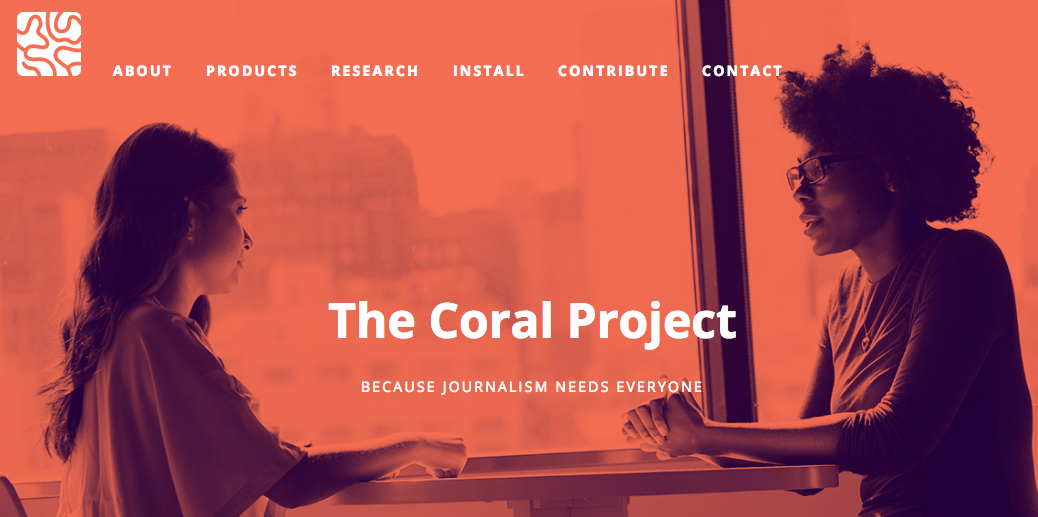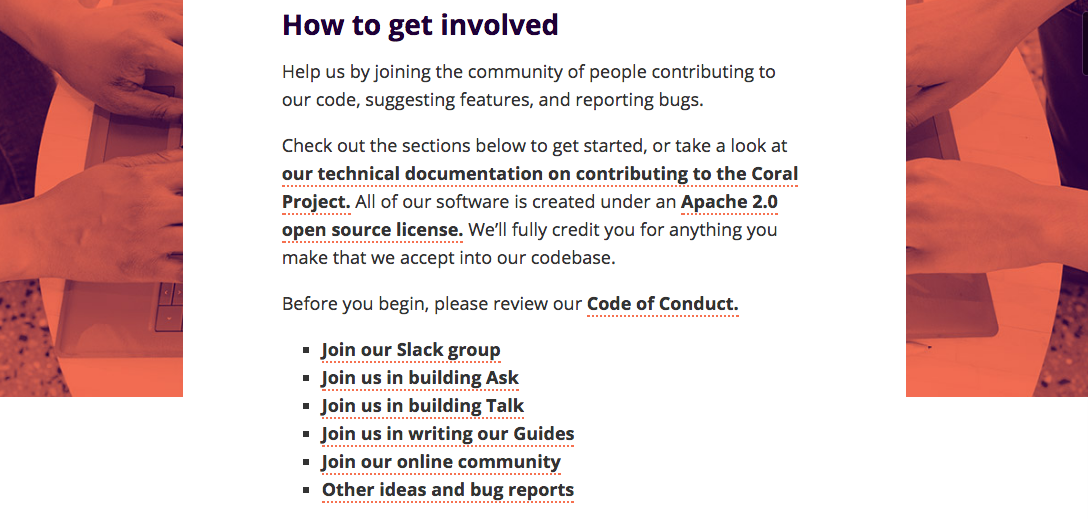How The Coral Project aims to bring journalism and communities closer together
And so The Coral Project develops free “cultural” and “technological” tools for anyone in the industry, as project lead Andrew Losowsky explains to use for engaging people in more “fundamental ways than reaching for likes and clicks”.
Below Andrew tells us more about:
1. How The Coral Project got started.
2. Its objectives.
3. How newsrooms can benefit from the free, open source tools it develops.
He also shares seven top tips for building community, and briefly explains why newsrooms “have to get back communities from Facebook” (the topic of a presentation he will give at the 10th Digital Innovators’ Summit, taking place on 20-21 March in Berlin).
How The Coral Project came into being
The Coral Project “was originally the brainchild of Aron Pilhofer, then at The New York Times,” Andrew tells us.
“[Aron] believes the entire industry needs to rethink its relationship with the audience. He teamed up with Emilio Garcia-Ruiz and Greg Barber at the Washington Post, and thanks to the support of the Knight Foundation and Dan Sinker at Mozilla, The Coral Project came into being.”
The Coral Project objective
It is “to bring journalists closer to the communities they serve, for everyone’s benefit,” says Andrew.

This is arguably more important today than ever before, given how several media misunderstood – and were surprised at – trends among communities driving outcomes such as Brexit and President Trump.
It’s about staying relevant, Andrew explains. “If journalism is to stay relevant in people’s lives, we need to get better at engaging with people and communities in a more fundamental way than reaching for likes and clicks.”
Cultural and technological tools
The Coral Project supports newsrooms that “are ready to do this in two ways: through cultural tools and technology”. Andrew explains:
Cultural:
1. We conduct and share research
2. We host online communities on our forum and in Slack – join here
3. We commission and share articles and guides to best practice
4. We run events, workshops, and consult for newsrooms of all sizes
Technology:
1. Our Ask tool helps newsrooms reach out, manage submissions, and display a gallery of the best responses
2. Our Comments Lab lets communities learn about and share features of comment spaces
3. Our Trust prototype showcases a different approach to tracking user behavior
4. Our Talk tool helps newsrooms create a better kind of comment space (currently beta testing)
Free, open source assets
“As part of the Mozilla Foundation, a non-profit, everything we build is available for free and is open source, to allow newsrooms to help build the pieces they need, and to share the results back with the community,” Andrew explains, adding, “We also have a full-time Integrations Engineer to help newsrooms get set up with our tools.”
According to Andrew several “newsrooms [are] already participating at various levels of the project, and [they] would love for more to join our community. Anyone can get involved by visiting our website”, where they will find more information on ways to get involved on this page.

Seven tips for building community
Andrew offers seven top tips for developing communities. They are:
1. Understand your journalistic mission
2. Consider the role of communities in your work. How does it fit into your mission?
3. Invest in connections at times when you don’t need something from your communities. Your relationship with communities cannot only be extractive.
4. Research the needs and expectations of your communities.
5. Listen to what people say.
6. Make any requests clear, achievable, consent-based, and with transparent rewards (which don’t have to be monetary).
7. Create ways for people to remain connected to your work, and to become more involved. Make sure you acknowledge those who do.
‘How to get your community back from Facebook’
The topic of his session at DIS in Berlin, Andrew will talk about why “nobody else should own your communities except you,” and show “how and why you can engage them effectively”.
He explains: “Facebook is a remarkable invention, and journalism needs to be a part of it. However, we can’t let one company own the relationship between journalists and the people they serve. I’m going to outline a series of ways that newsrooms can change their thinking and their actions based on our work, in order to get closer to the communities they serve. Because journalism needs everyone.”
About Andrew
Andrew was The Coral Project’s first full-time hire, in April 2015.
Now, as project lead, he oversees a team of 12 “remarkable people”. Born in the UK (“I drink a lot of tea,” Andrew says here), he took his first flight aged 17, and since then has lived in Hong Kong, Spain, and now New York City.
He has worked in startups and big news organisations, and has taught at various universities. “I’ve always been passionate about journalism, storytelling, and community.”
A chance to offer Andrew tea
Andrew will speak on the 2nd Day (21 March) at Digital Innovators’ Summit. You can see the agenda for Day 1 here (20 March) and the full list of DIS 2017 speakers here. A limited number of tickets remain available. Standard rates are available until 16 March (late registrations after the 16th cost €200 more). Sign up here if you haven’t yet and still want to attend.
And yes, there will be free tea to offer Andrew a cuppa, or more, however much he wants to drink.
More like this
Three industry insiders on journalism in 2017
Social media ‘leaves publishers in the dust, connecting people around stories’
FIPP Insight report: The oft maligned “comment section” – time for a rethink?








